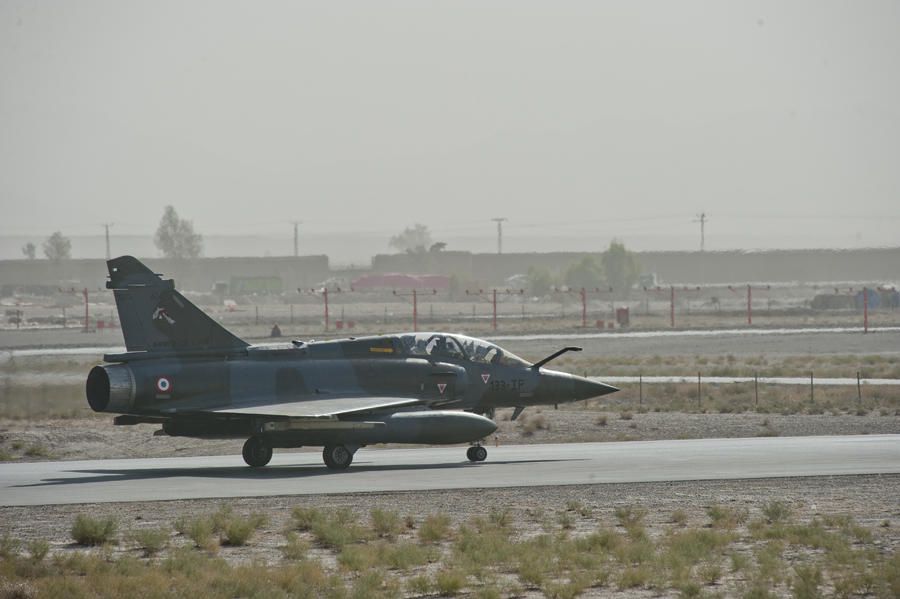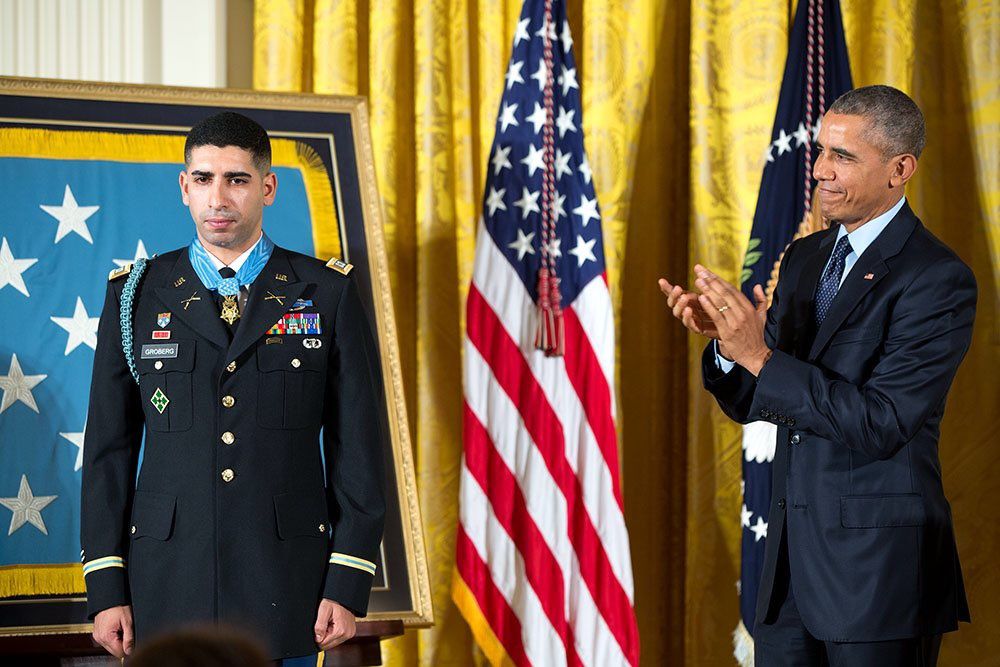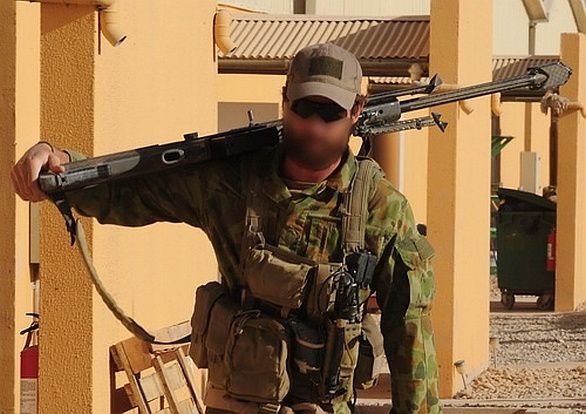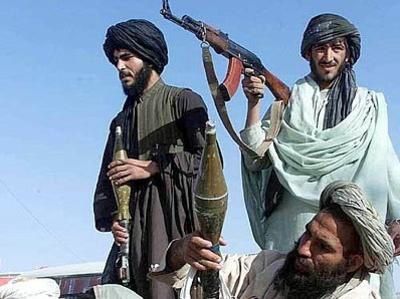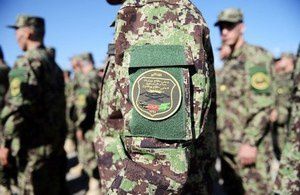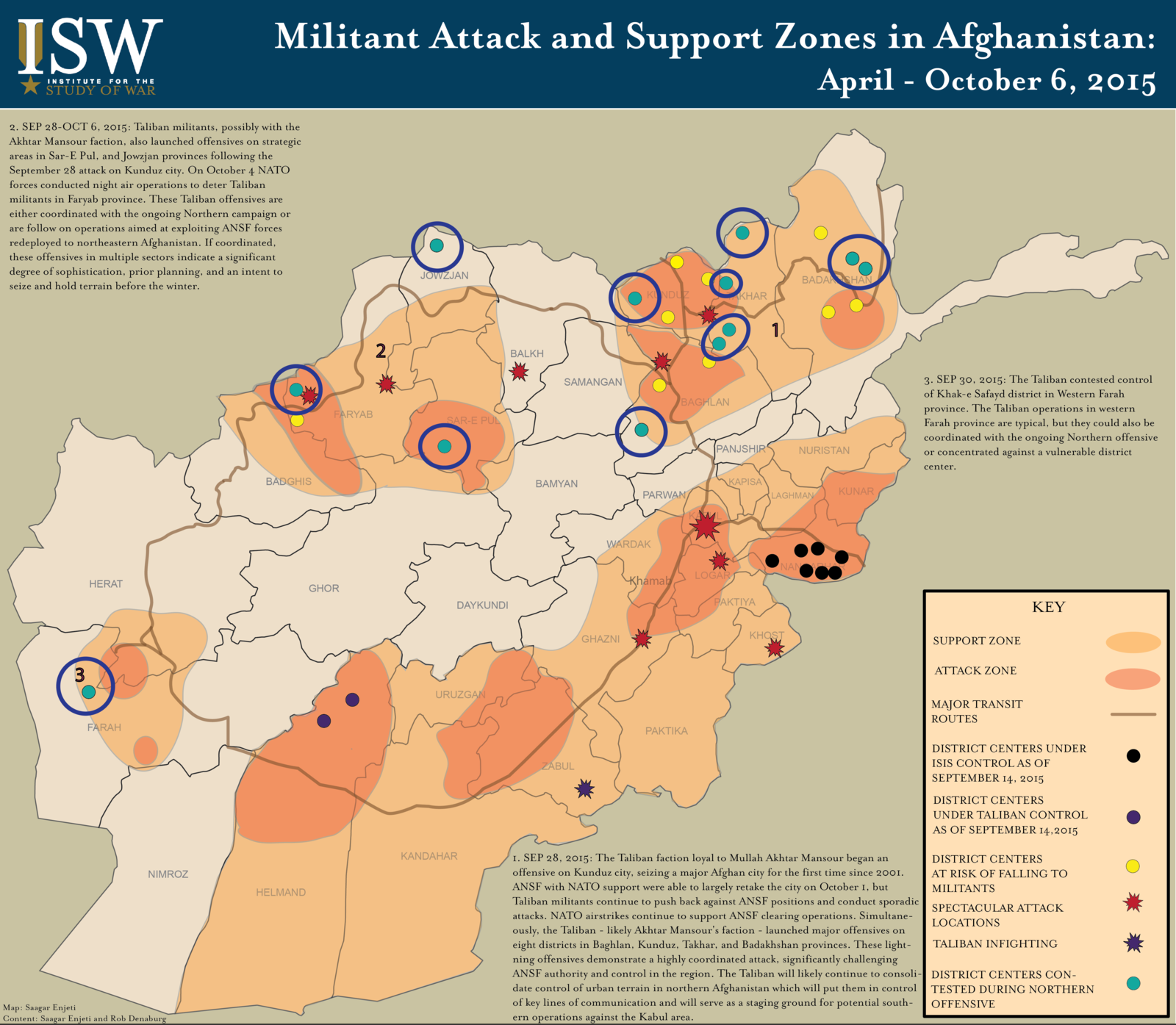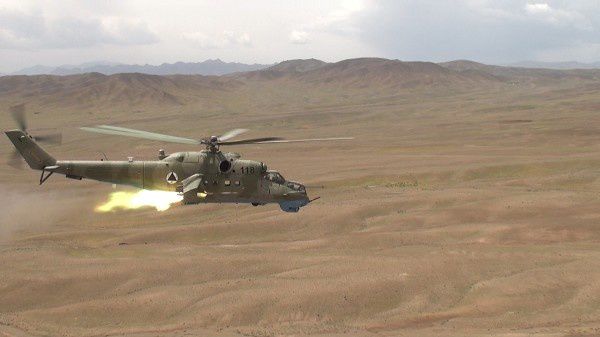Militant Attack and Support Zones in Afghanistan April-October 6, 2015 - credits ISW
October 13, 2015: Strategy Page
The sudden increase of Taliban activity in northern Afghanistan, especially the temporary seizure of Kunduz (a city of 145,000), is a new aspect of an old problem; Taliban efforts to make the north safer for smuggling heroin out of the country. Charging into Kunduz on September 28 th was unusual, because it was an expensive operation in that it gets a lot of Taliban fighters killed or captured and is soon undone once the security forces send enough reinforcements to the city. And that’s what happened. It got worse when several similar attacks failed to get into the city they were after. Such spectacular attacks are mainly for terrorizing the local population, especially politicians and business owners, into being more cooperative. The basic problem for the Taliban and the drug gangs they work for is that they don’t want to run the country but do need free access to keep the drug business going. This is especially true of the north, where the locals have always been more anti-drugs and hostile to the Talban.
The northerners must be terrorized into subservience. With the foreign troops gone the drug gangs and the Taliban can operate with a lot more freedom (from interference and heavy losses from air strikes). You can see how the drug gangs are controlling all of this because the locations where the Taliban are most active are the ones most crucial to drug gang profits (which the Taliban share). Thus the smuggling routes to Central Asia, Pakistan and Iran are more frequently the scene of Taliban violence. The official Taliban line is that this is all for the purpose of putting the Taliban back in charge of the country. The reality is that most Taliban are content to make a good living off the heroin trade. That this cripples the economy and hurts the majority of Afghans does not bother members of the drug gangs or the Taliban. This is curse of Afghanistan, where the country has long suffered from a lack of cooperation and efforts to curb the ancient chaos. This is particularly the case in the north, where local warlords (often politicians) is strong and while these guys tend to be anti-drug and anti-Taliban they are definitely not anti-making-money. The impact on Afghanistan can be seen by the fact that unemployment has risen (over a third of Afghans are unemployed) and the number fleeing the country is increasing. About 10,000 Afghans a day are applying for passports, the first step is leaving to legally (or illegally) reaching another country and a new home. Iran reports that about 2,000 Afghans a day illegally enter Iran, often on their way to a more distant country (usually in the West). All this is fine with the Taliban and drug gangs because most of the people leaving are very hostile to the Taliban and drug gangs.
Normally the Taliban, or local drug gangs only have a lot of control in a few of the 373 districts (each province is composed of districts) in Afghanistan. The Taliban are active in 10-15 percent of districts, mainly in the south (Helmand and Kandahar, where most of the heroin is produced) and the east (where many Pakistan/ISI supported Islamic terrorist groups operate) and increasingly in the north. The north is always a problem because the drug gangs have to deal with the security forces, local warlords and a strong tradition of local defense militias (except in the cities).
Eastern Afghanistan is also the main transit route for drug exports and those drugs (heroin, opium and a few others) generates the cash that keeps the Taliban a major problem. There is also significant Taliban activity in the north, where another major drug smuggling route goes through Central Asia. But the main route is in the east, which goes to the Pakistani port of Karachi and thence the world. Populous or heavily trafficked districts usually have enough police, soldiers or pro-government militias nearby to keep the Taliban out of the towns that serve as district capitals. But in remote, thinly populated districts it is different and a Taliban force can sneak in and take over for a while, grabbing some media attention along the way.
The Taliban have other problems and have formed special units to search for and destroy ISIL (Islamic State in Iraq and the Levant) groups operating in eastern Afghanistan. Taliban problems with former Taliban (including most of the non-Afghans, mainly from Central Asia and Chechnya) who have left to form local branches of ISIL have gotten worse over the last year. ISIL groups are using tactics aimed at making the Taliban look bad. For example the ISIL men do not terrorize local villagers and pay for any supplies or services they need. The ISIL men point out that the Taliban have become corrupted by working with drug gangs and are no better than bandits. This resonates with the Pushtun tribesmen but there is fear that ISIL will soon turn to enforcing strict lifestyle rules, something the Taliban have backed away from (because of sustained popular resistance). That has not happened yet and currently ISIL concentrates on staying alive in the face of Taliban and government attacks. The Taliban tries to keep this war with ISIL a secret but the news gets out (often via cell phone) and spreads. ISIL has openly declared war on the Taliban and gains some traction with accusations that the Taliban were created and still work for Pakistan. This is largely true, but the Taliban also work for local drug gangs. ISIL is aware of that but knows that the Pakistani connection is more of an issue to most Afghans. Yet the growing presence of ISIL in Afghanistan is also bad news to many Afghans because ISIL is basically Islamic terrorists who have become even more violent and uncompromising.
The defections to ISIL began in late 2014 when a few Taliban leaders (especially field commanders who have armed followers and know how to fight) defected to ISIL and were soon at war with a Taliban they saw as sell-outs and reactionary Islamic radical pretenders. Some of these new ISIL groups appear to have modified their stance on the drug trade as even ISIL fanatics have operating expenses and in a few cases ISIL has replaced the Taliban as drug gang hired guns. ISIL leadership in Syria opposes this and has created a cash pipeline to provide money for operating expenses and make it unnecessary to have any friendly dealings with criminal gangs of any sort. The drug gangs aren’t taking sides in the Taliban/ISIL feud because for a drug lord it is all just business. Now ISIL is using more direct attacks on nearby Taliban factions in what appears to be a sustained effort to replace the Taliban. If the local ISIL can maintain other sources of income they could eventually become a threat to the drug gangs. The drug lords don’t believe it will ever come to that because ISIL in Syria is under growing attack and most governments (and many rival Islamic terror groups) are constantly attacking these ISIL cash pipelines and will eventually cut off the money supply. At that point the Afghan ISIL groups will be vulnerable to destruction or corruption.
One thing warlords, the Taliban, drug gangs and ISIL can agree on is the need to halt the American UAV operations and air operations in general. Not only do these persistent UAVs and aircraft constantly search for, and often find, people they are looking for but often quickly fire very accurate and effective missiles. This has become a major problem for leaders of all these criminal or Islamic terror groups. Even if you manage to avoid the missiles you do so by severely restricting your movement, communications and other activities. Because the UAV operations are run solely by the Americans bribes don’t work. Worse, Afghan officials who are not on the payroll often provide the Americans with tips about where potential targets are. In response more cash and threats are used against vulnerable officials to obtain some public protests against the UAV operations. This does not impress locals, most of whom back the UAV operations, but the protests connect with some foreign media and politicians.
Another problem the drug gangs currently have is a global heroin price war caused by too much heroin coming out of Afghanistan, Burma and other new sources. Heroin is a lucrative business and more people want market share. This means Afghan drug gangs have to produce and move more opium and heroin in return for less money. That is bad for business on many levels, especially on the retail end (where a lot more users overdose and that discourages potential new users). Afghanistan is still the major (over 80 percent of the market) producer but tribal rebels in northern Burma are expanding production and currently account for about ten percent of the global heroin supply. Other significant (and growing) producers are in in Pakistan, Colombia, Guatemala, and Mexico.
While a few large gangs and warlords control the heroin business, there are other illegal enterprises available to local hustlers. One of the most popular of these is illegal mining. There are over 2,000 illegal mines operating throughout Afghanistan and these have grown so numerous that legal mining has declined. The major problem legal mining encounters is poor security and infrastructure which is sustained by lots of corruption. Small, private mines increased production, as did illegal mines. Since 2010 there have been efforts to get large-scale legal mining operations going. While there are believed to be over a trillion dollars of minerals underground, you need an honest and efficient government before foreign firms will invest tens of billions to set up the large mines and build roads and railroads to get the goodies out, and equipment in. These mines generate tremendous revenue for the government and lots of good jobs. That won't happen as long as the drug gangs dominate the south. This is actually old news, as there have been several surveys of the country since World War II and the mineral deposits were, at least among geologists, common knowledge. Some have tried to get large scale operations going and all, so far, have failed. But because of American encouragement in 2010 the Afghan government called for foreign firms to make offers. There was some interest but the mining companies soon encountered the same fate of past efforts (corruption and lack of infrastructure). Meanwhile the small scale mines continue with the expensive assistance of the criminal underground.
Afghanistan accused Pakistan of helping plan and carry out the recent Taliban raid on Kunduz. The Pakistanis deny any involvement, but they always do and have a long and proven record of interfering in Afghan internal affairs. Afghanistan also believes that a lot of the recent Taliban violence in Afghanistan was made possible by the thousands of non-Pakistani Islamic terrorists fleeing North Waziristan and moving to Afghanistan. There, many of these foreign Islamic terrorists have joined the Afghan Taliban and provided an infusion of very dedicated and dangerous fighters. Afghan intelligence believes that the Afghan Taliban leadership is still operating from a sanctuary in southwest Pakistan, something Pakistan continues to deny despite lots of evidence showing senior Taliban are in the area (Baluchistan). Pakistan says it is trying to get the peace talks with the Afghan Taliban restarted but many Afghans believe it was the Pakistanis who caused the talks to collapse before they could get started. That’s because the main reason for the collapse of the peace talks back in July was the unexpected revelation that Afghan Taliban leader Mullah Omar had died in a Pakistani hospital in 2013. This revelation caused a split, still not healed, within the Afghan Taliban leadership. To most Afghans it is obvious Pakistan was behind all this. Currently the Afghan government is not willing to reconsider peace talks with the Afghan Taliban until Pakistan cuts its support of, and control over, Islamic terror groups (like the Taliban and Haqqani Network) operating in Afghanistan.
October 12, 2015: South of Kabul some 2,000 Taliban, coming from several different directions, tried to rush in and seize control of Ghazni city, which is about the same size as Kunduz. This attack failed with none of the Taliban groups getting any closer than five kilometers from the city. Meanwhile troops and police are still fighting Taliban in some Kunduz neighborhoods.
The Taliban went online and declared war on Tolo and 1TV, two of the major TV networks in Afghanistan because the two networks reported incidences of Taliban raping women when they briefly occupied Kunduz.
October 11, 2015: In Kabul a Taliban suicide bomber tried to attack a British military convoy but failed. The bomber was killed and three civilians wounded.
October 10, 2015: In the south (Kandahar) the security forces detected the Taliban assembling several hundred men in a rural area of Shurabak, near the Pakistan border. Air strikes were called in, followed by a ground operation. The operations found over a hundred Taliban dead and more than fifty wounded by the attack.
October 7, 2015: In Kabul police arrested two Haqqani Network suicide bombers and prevented them from detonating the explosives in the car they were driving. Because of the complexity of the bomb it was decided to evacuate nearby buildings and detonated the car bomb where it was stopped.
October 6, 2015: The commander of U.S. forces in Afghanistan ordered all troops under his command to be formally reminded of the ROE (Rules of Engagement). This is a reaction to an October 3rd incident in Kunduz where Afghan forces called in American air support against Taliban who were firing on them from a building in a hospital compound. An American AC-130 gunship responded. Despite the precision of the AC-130 fire the Taliban were operating in the midst of civilians (a favorite tactic to prevent air strikes) and 22 civilians died as well. This became a major news story and the result will be more strict application of the ROE and a lot less U.S. air support for Afghan troops and police. This makes the security forces less effective and the Taliban more so. This sort of thing is no accident. The Taliban and drug gangs have invested a lot in the local media, to make each civilian death, at the hands of foreign troops, a major story. The majority of civilian combat deaths are at the hands of the Taliban or drug gangs, and the local media plays those down (or else). It's a sweet deal for the bad guys, and a powerful battlefield tool. The civilians appreciate the attention, but the ROE doesn't reduce overall civilian deaths, because the longer the Taliban have control of civilians in a combat situations, the more they kill. The Taliban regularly use civilians as human shields, and kill those who refuse, or are suspected of disloyalty. In most parts of Afghanistan, civilians are eager to get the Taliban killed or driven away, as quickly as possible and by any means necessary. The number of civilian deaths, at the hands of NATO/Afghan forces, are spectacularly low by historical standards. The U.S. armed forces have reduced civilian casualties during combat by over 90 percent since the 1970s. This is the result of wider use of precision weapons, better communications and new tactics. The troops know this, some of the civilians know this, but the media doesn't care and the Taliban know that dead Afghan soldiers and police are not news but dead civilians are, especially if it is one of rare incidents where the Taliban was not responsible.
In Kabul police arrested a Haqqani Network suicide bomber and disabled the explosives he was carrying. The man was attempting to attack a police station. The man later admitted that he had been trained across the border in Pakistan (Peshawar).
October 5, 2015: Some 400 kilometers northwest of Kabul over 500 Taliban attempted to charge into the city of Maimana (the capital of Faryab province and about half the size of Kunduz). The attack was repulsed with at least 20 percent of the attackers killed or wounded.
In the east (Khost) police arrested a Haqqani Network commander they had long been seeking.
October 4, 2015: Security forces completed killing or driving out most of the Taliban in Kunduz. Between today and the original attack on September 28th over 300 Taliban were killed.
In Kabul police detected and killed two suicide bombers before they could reach their target.
September 30, 2015: Afghan security forces began moving into Kunduz to clear out Taliban raiders.
September 28, 2015: Up north hundreds of Taliban gunmen used surprise and the darkness of night to seize control of Kunduz City. Taliban have been trying to do this since late April. Until now the Islamic terrorists had suffered thousands of casualties and were still stuck in the city outskirts. But this time they managed to move in several large groups of gunmen undetected by Afghan intelligence and pull off a surprise attack. This is part of a decade’s long effort to establish base areas outside the south. These efforts have not gone so well but the Taliban keep trying because control of border areas, and routes to them, in the north (to Central Asia) and east (to Pakistan, the port of Karachi and then the world) are essential for the drug gangs. Most drug sales are outside of Afghanistan and these smuggling routes are essential and must be safe enough to get most of the drugs out without being seized and destroyed. Bribes do most of the work with force being applied as needed. This explains the constant battles in northern and eastern Afghanistan. The fighting in the south is easier to understand because that is where the opium and heroin are produces. The problem in the north is that the Pushtun tribes up there are minorities, and are more concerned about angering non-Pushtun neighbors than in cooperating with Pushtun-run drug gangs from the south. As a result in the north more people are providing information on Taliban movements, and more Taliban are getting caught or killed up there. This time the Taliban presence for months had eliminated untrustworthy civilians and make this attack possible. Kunduz Province has always been the key to the northern smuggling route and Kunduz City (the provincial capital) is the key to controlling the province. Trying to seize control of Kunduz City is risky but a bold move nonetheless. Unfortunately the Taliban offensive came at the same time that a newly elected president came to power and proceeded to keep his campaign promises to dismiss corrupt and ineffective officials. That included a lot of senior people in the defense ministry and northerners blame the sloppy army performance in Kunduz on this housecleaning in the senior ranks of the army. Fortunately the non-Pushtun tribes that dominate the north have militias that were willing to defend Kunduz, as they had back in the late 1990s. Unfortunately pro-government militias are easier to bribe.
Taking Kunduz is a big deal for the Taliban and a defeat up there hurts Taliban morale and income. This will make some of the true-believer Taliban consider switching to ISIL as it is clear to most Taliban that the Kunduz operation is mostly about the drugs, not establishing a religious dictatorship in Afghanistan. Hatred of the drug gangs and the Taliban is most intense in the north, where the non-Pushtun tribes (who are 60 percent of the Afghan population) are very hostile to any Pushtun “invasion”. The battle for Kunduz City is a test of whether drug gang money and hired guns (the Taliban) can overwhelm local hostility. Drug gang bribes have already bought temporary loyalty of many northerners, but can guns and money control the entire province? So far it’s a standoff with Taliban gunmen blocking most roads around the city while the government and local tribes send more reinforcements. ISIL is also active in Kunduz Province and apparently employed by at least one drug gang. So far several hundred thousand civilians have fled the area, fearing that the fighting will escalate before it is over. The danger to the civilians has encouraged the local tribal and warlord militias to go after the Taliban, who are seen as foreign invaders and deserving of no mercy.
September 24, 2015: Pakistan says that Afghan Taliban are leaving Pakistan after receiving a warning. Afghanistan does not believe this.











